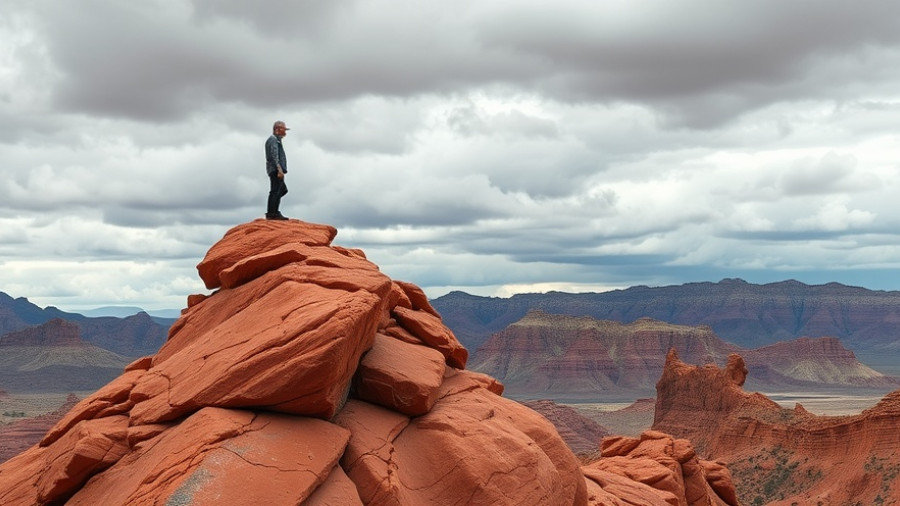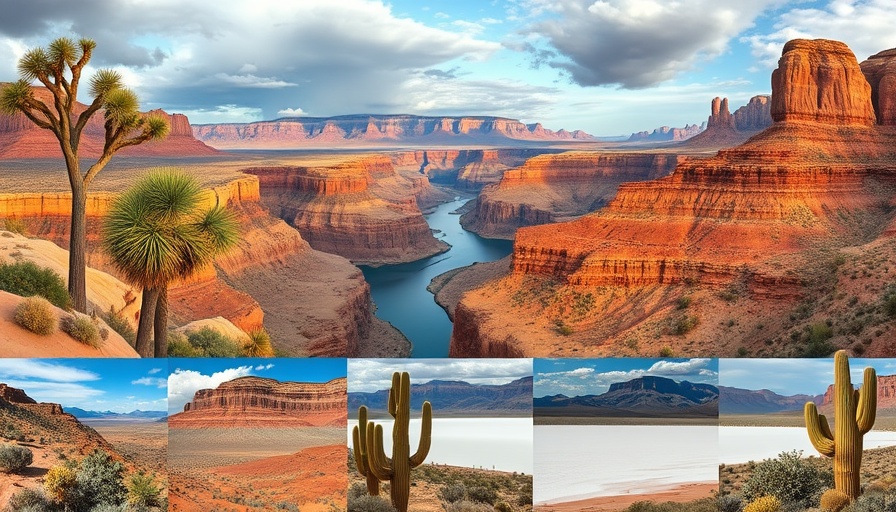Unlocking the Mysteries: Why the Great Smoky Mountains National Park Holds More Than Meets the Eye
Imagine standing at the edge of an ancient ridge, mist softly draping centuries-old trees, while an orchestra of birdsong echoes through endless forests. Great Smoky Mountains National Park is not just the most visited national park in America—it’s a living, breathing testament to the natural world’s power, mystery, and diversity. Yet for all its popularity, many visitors never scratch the surface, missing out on secluded trails, rare wildlife encounters, and pockets of rural Appalachian history nestled deep within the misty folds of the mountains.
Exploring Great Smoky Mountains National Park isn’t just ticking off iconic overlooks or hiking the busiest trails. It’s about immersing yourself in a place renowned for its botanical variety and wildlife, where every bend in the road or path can lead you to silent valleys, roaring waterfalls, or relics of mountain culture. With ridges stretching from North Carolina to Tennessee, and habitats ranging from mountain balds to deep, shadowy forests, the park offers both a sanctuary for nature and a tapestry of hidden gems waiting for curious souls. If you’re seeking more than the typical park brochure suggests, join us as we reveal the wonders you might never know exist—and why they matter so deeply for every visitor, from casual explorer to seasoned adventurer.

Beyond the Obvious: Understanding the Depths of Great Smoky Mountains National Park
The allure of Great Smoky Mountains National Park lies in more than just sweeping vistas—it’s a staggering diversity of life and landscape that spans over 800 square miles. Stretching along the North Carolina and Tennessee border, this preserve is celebrated for its rich biodiversity: more kinds of trees than in all of northern Europe, hundreds of unique animal species, and a flourishing patchwork of both preserved wilderness and remnants of Southern Appalachian culture. These layers make the park not only a destination for hikers and photographers, but also a globally recognized sanctuary for conservation and discovery.
However, the depth of the park’s experience can be easy to overlook. Many flock to popular spots like Cades Cove or Clingmans Dome, but overlook quieter valleys or less-traveled historical remnants that offer solitude and a unique perspective. If you’re unaware of the hidden opportunities, it’s possible to leave without truly encountering the rare elk herds at dusk, or the quiet awe of an old growth forest untouched for generations. Failing to appreciate the park’s subtler wonders can mean bypassing the true magic—the once-in-a-lifetime moments, the sense of stepping into living history, and encounters with wildlife that leave a lasting impression. For those willing to look deeper, the Great Smoky Mountains National Park unveils an unrivaled richness that changes the way you see the natural world.

Hidden Wonders and Lasting Rewards: The Transformative Benefits of Exploring the Park’s Secrets
As America’s most visited national park, Great Smoky Mountains National Park draws visitors with its legendary ridges and sweeping overlooks. Yet, stepping off the main roads and trails leads to experiences that go far beyond photo opportunities. Each hidden stream or undisturbed glen offers a glimpse into a delicate ecosystem teeming with creatures large and small—from the elusive elk in Cataloochee Valley to black bears expertly adapted to the park’s dense forests. The chance to observe wildlife in their natural habitats—sometimes just steps from an unmarked trail or a quiet clearing—not only sparks awe, but deepens understanding of conservation and the fragile balance maintained within these boundaries.
For adventure seekers, wandering lesser-known paths unlocks new dimensions: roaring waterfalls on seldom-hiked routes, historic mills waiting to be explored, or tranquil campsites under an expansive, star-filled sky. Each discovery, whether a misty overlook at sunrise or the cool spray of a hidden cascade, reconnects you with nature and invites relaxation, reflection, and peace. The park’s unique blend of natural beauty and cultural history—evident in its preserved landscapes and centuries-old structures—offers a powerful reminder of America’s wild roots and the importance of stewardship. The treasures of Great Smoky Mountains National Park aren’t just scenic backdrops—they are immersive, life-affirming experiences accessible to anyone willing to look a little closer.

From Ancient Forests to Living Heritage: History Intertwined with the Land
Much of the park’s appeal comes from its role as a living repository of Southern Appalachian history. As you traverse the winding roads and rugged trails, you’re following paths shaped by generations—Cherokee names like Kuwohi are returning, and relics like pioneer homesteads and grist mills dot the valleys. Stepping into Cades Cove, for instance, is like walking back through time, surrounded by mountains that witnessed both indigenous tribes and Euro-American settlers etching out a life in the shadow of dense forests and rocky streams. These remnants stand as open-air museums, silent but powerful storytellers of resourcefulness and adaptation.
For those who look beneath the surface, exploring these cultural landscapes deepens the park experience. Historic mills still churn beside streams, while preserved cabins tell of hardy communities that once thrived among these ridges. Even the valleys and place names reveal layers of collective memory, connecting visitors not only to spectacular nature but to the human stories woven through it. Recognizing these overlaps of history and habitat adds new meaning to each hike or scenic drive—transforming the park from a collection of scenic spots to a vibrant, enduring legacy.
The Magic of Diverse Life: Why Every Ecosystem Counts

Great Smoky Mountains National Park is internationally recognized for its stunning diversity—its forests are so rich that scientists still routinely discover new species within its boundaries. The interplay between misty valleys and towering peaks creates habitats supporting more tree species than found in all of northern Europe. For visitors, this means every season brings striking changes: wildflower carpets in spring, lush canopies in summer, brilliant colors in autumn, and silvery frost layering ancient forests in winter.
Appreciating this ecological wealth is more than a scientific curiosity—it’s an invitation to see the land as a living organism, where every visit can become an act of discovery. From spotting synchronous fireflies in June to watching elk graze during the golden hours, visitors can witness rare phenomena found nowhere else on earth. Preserving and understanding these dynamics is essential, not just for plants and animals, but for people seeking to reconnect with the rhythms of the wild.
Practical Pathways: Tips for Accessing the Park’s Lesser-Known Delights
Enjoying the true breadth of Great Smoky Mountains National Park requires planning and a spirit of exploration. Start by checking the latest alerts for road and trail conditions—weather can create quick changes, and certain areas open or close depending on the season. A parking tag is now required for longer visits, so plan ahead, especially if hoping to linger by a quiet stream or on an out-of-the-way summit.
To maximize your visit, explore beyond the popular routes. Choose from 10 developed campgrounds or venture into the backcountry for a night under the stars. Arrive early or late in the day to increase chances of spotting wildlife like elk in the Cataloochee Valley or along open fields near visitor centers. Consider exploring during shoulder seasons to avoid crowds and enjoy a quieter, more thoughtful experience. Don’t forget to pause at cultural sites, where old mills and preserved cabins reveal glimpses of lives once lived in harmony with the mountains.
Protecting Wild Spaces: The Park’s Enduring Mission for Diversity and Preservation
The mission of Great Smoky Mountains National Park centers on stewardship: preserving the wondrous harmony of natural and cultural diversity for future generations. Every initiative here, from managing wildlife habitats to restoring historic names like Kuwohi, is driven by a core philosophy of respect for both land and heritage. Emphasizing a “wondrous diversity of life,” the park upholds the delicate balance between providing access and protecting sensitive resources—so that rare orchids, migratory birds, and black bears will continue to thrive alongside visitors.
This commitment to preservation ensures not just the survival of species, but the ability of every visitor to find adventure, solitude, and meaning. By highlighting both environmental and historical significance, the park stands as a living classroom, nudging travelers to think bigger about conservation and their own place within nature’s story. The result is a park experience that feels both timeless and ever-evolving, where past and present meet on every trail and at every scenic overlook.
First-Hand Reflections: A Visitor’s Encounter with the Park’s Hidden Magic
Personal stories often best capture the impact of stumbling upon the Smokies’ secrets. Many visitors leave not just with photographs, but with moments that feel almost dreamlike—encounters impossible to plan, yet unforgettable. Consider this powerful reflection:
🌲⛰️ Great Smoky Mountains National Park is one of the most beautiful places I’ve ever been. The mountain views, misty layers, and peaceful trails feel like something out of a dream. We saw deer up close, hiked through lush forests, and enjoyed the fresh mountain air after the rain — it was magical! 🦌☁️Every turn reveals a new scenic view, and it’s the perfect mix of adventure and relaxation. A must-visit for anyone who loves nature, hiking, or just a peaceful escape from the city. I already can’t wait to come back!
Reflection like this highlights what draws millions to the Smokies year after year. The joy of a surprise deer encounter, the quiet after rainfall, and the sense of being transported beyond the ordinary exemplify the park’s ability to nourish both body and spirit. For countless visitors, discovering the park’s hidden gems creates a sense of belonging and renewal—a feeling that stays long after the trails have ended.
Preserving Wonder for Tomorrow: How Hidden Gems Elevate Every Visit to the Smokies
The true value of Great Smoky Mountains National Park extends far beyond its iconic vistas. Each lesser-known trail, historic relic, and silent mountain cove enriches the story of America’s wild places, offering adventure for those bold enough to seek more than the obvious. The park’s unwavering focus on biodiversity and cultural preservation ensures that today’s visitors—and tomorrow’s—experience both rare wildlife moments and quiet walks through history. Whether you crave a solo journey among ancient trees or a family escape teeming with wildlife, exploring the park’s hidden gems guarantees lasting rewards.
Every trip to Great Smoky Mountains National Park is an opportunity to embrace wonder, curiosity, and stewardship. By lifting the veil on its secrets, the park not only showcases breathtaking beauty but becomes an essential part of our shared heritage—a place that calls us back, again and again, to explore, learn, and care for the living world.
Contact the Experts at Great Smoky Mountains National Park
If you’d like to learn more about how Great Smoky Mountains National Park could benefit your next outdoor adventure, contact the team at Great Smoky Mountains National Park.
📍 Address: United States
📞 Phone: +1 865-436-1200
🌐 Website: https://www.nps.gov/grsm/index.htm
Great Smoky Mountains National Park Location and Availability
🕒 Hours of Operation:
📅 Monday: Open 24 hours
📅 Tuesday: Open 24 hours
📅 Wednesday: Open 24 hours
📅 Thursday: Open 24 hours
📅 Friday: Open 24 hours
📅 Saturday: Open 24 hours
📅 Sunday: Open 24 hours

 Add Row
Add Row  Add
Add 





Write A Comment